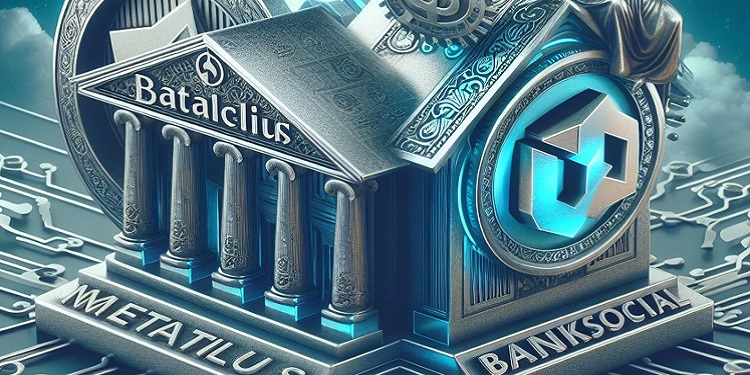News
Metallicus and BankSocial Leverage Blockchain to Reshape Banking

Amid the furor surrounding the SEC’s approval of a Bitcoin ETF and its actions against cryptocurrency exchanges, two companies are quietly revolutionizing the banking industry by leveraging blockchain technology. Metallicus and BankSocial are at the forefront of harnessing the transformative potential of blockchain to reshape the future of banking.
Metallicus’ Blockchain Banking Innovation Program
Metallicus introduced the Metal Blockchain Banking Innovation Program, attracting the attention of three credit unions: Vibrant, Meritrust Credit Union and Fairwinds. This initiative aims to explore customized use cases, integrate fintech partnerships and collaborate with industry experts to ensure regulatory compliance.
According to Frank Mazza, director of blockchain and digital assets at Metallicus, many banks and credit unions aspire to implement blockchain solutions but face resource constraints and regulatory uncertainties.
BankSocial’s vision for the future
BankSocial, which operates on the Hedera Hashgraph distributed ledger technology, offers a unique crypto exchange for credit unions and a Know Your Customer (KYC) solution. The company’s goal is to create “DeFy Federal Credit Union” and create a model for credit unions to seamlessly participate in the Web3 ecosystem.
John Wingate, CEO and founder of BankSocial, highlights the company’s broader goal of fostering a Web3 ecosystem where credit unions can thrive.
Credit unions: a goal for collaboration
Credit unions have become attractive partners for Web3 companies like Metallicus and BankSocial, thanks to support from the National Credit Union Administration (NCUA) in exploring distributed ledger technology (DLT). This marks a significant shift as credit unions are courted for partnerships and collaborations compared to traditional banks.
Blockchain’s history with credit unions
Credit unions’ exploration of blockchain technology is not new. The 2016 CU Ledger project, led by the Credit Union National Association and the Mountain West Credit Union Association, laid the foundation for future blockchain adoption. Now known as Bonifii, the project focuses on identity verification solutions to combat fraud.
A race between innovation and regulation
As credit unions delve deeper into blockchain technology, they could surpass traditional banks in technological advancement. As banks focus on overcoming regulatory hurdles associated with offering crypto services, companies like Metallicus and BankSocial are poised to lead the charge in blockchain innovation in the credit union industry.
Conclusion
The emergence of Metallicus and BankSocial as leaders in blockchain innovation highlights the transformative potential of blockchain in banking. As credit unions explore blockchain technology, they could redefine banking practices and establish themselves as leaders in the digital age.
